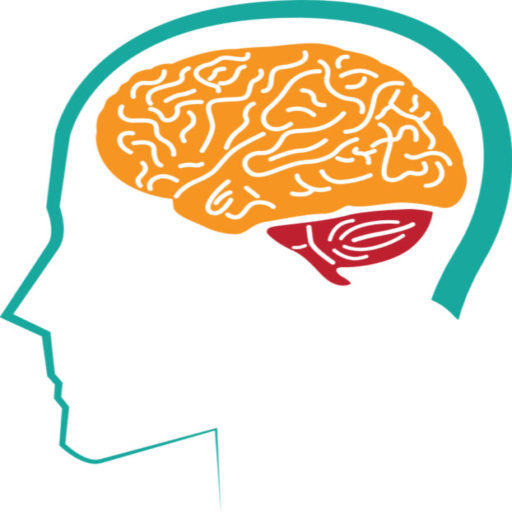Introduction
Anxiety is a common mental health condition that can manifest in various forms, from generalized anxiety disorder to social anxiety and specific phobias. While traditional talk therapy is effective for many, some individuals find it challenging to express their emotions verbally. This is where art therapy comes into play. In this article, we will explore how art therapy provides a non-verbal outlet for expression, showcase case studies illustrating the benefits of art therapy, and discuss how art therapy can be integrated into existing treatment plans for anxiety.
Art Therapy as a Non-Verbal Outlet
Art therapy is a form of psychotherapy that utilizes the creative process of making art to improve mental and emotional well-being. It provides a unique non-verbal outlet for individuals to express their thoughts, feelings, and experiences. Here’s how art therapy works:
1. Expressing Emotions Through Art
Art therapy encourages individuals to use various art materials, such as paint, clay, or collage, to create visual representations of their emotions and experiences. This can be especially helpful for those who struggle to articulate their feelings verbally.
2. Exploring Unconscious Thoughts
Creating art can tap into the unconscious mind, allowing individuals to uncover and process hidden thoughts and emotions that they may not be consciously aware of. This can lead to greater self-awareness and insight.
3. Reducing Anxiety and Stress
Engaging in creative activities can be calming and meditative, helping to reduce anxiety and stress. The act of creating art can promote relaxation and mindfulness.
4. Enhancing Communication
Art can serve as a bridge for communication. Therapists can interpret the art and engage in discussions with clients about their creations, fostering dialogue that may be difficult to initiate through traditional conversation.
Case Studies: The Benefits of Art Therapy for Anxiety
Case Study 1: Sarah’s Journey
Sarah, a 25-year-old woman, struggled with severe social anxiety that made it challenging for her to interact with others, even her family. Traditional talk therapy wasn’t yielding significant progress. Sarah began art therapy as an alternative approach.
Benefits: Through art therapy, Sarah expressed her social anxieties through paintings and sculptures. She created artwork depicting the fear and discomfort she felt in social situations. Over time, Sarah’s therapist used these creations as starting points for discussions, helping her gain insight into her anxiety triggers. Sarah’s communication skills improved, and she gradually started attending group therapy sessions for social anxiety.
Case Study 2: David’s Artful Recovery
David, a 32-year-old man, had been living with generalized anxiety disorder for years. He often felt overwhelmed by racing thoughts and physical symptoms of anxiety, such as rapid heartbeat and sweating. His therapist recommended integrating art therapy into his treatment plan.
Benefits: David found relief in creating art as a way to externalize his anxious thoughts. He used painting and drawing to represent his anxious mind, creating vivid, chaotic images. Over time, his therapist guided him in exploring these artworks and identifying patterns and triggers for his anxiety. David also discovered that engaging in art helped him manage acute anxiety episodes. He began incorporating creative activities into his daily routine as a coping strategy.
Case Study 3: Emily’s Creative Coping
Emily, a 17-year-old high school student, struggled with test anxiety. She often experienced panic attacks during exams, which hindered her academic performance and self-esteem. Emily’s school counselor recommended art therapy as an adjunct to her existing treatment.
Benefits: Emily used art therapy to create a series of drawings and collages that represented her test anxiety and the physical sensations she experienced during panic attacks. Through discussions with her art therapist, Emily learned relaxation techniques and coping strategies to implement during exams. The act of creating art also provided an outlet for her anxiety, reducing the frequency and intensity of panic attacks. Emily’s academic performance improved, and she gained confidence in managing her anxiety.
Integrating Art Therapy into Existing Treatment Plans
Art therapy can be integrated into existing treatment plans for anxiety in various ways:
1. Assessment and Diagnosis
Art therapy can be used as an initial assessment tool to help therapists understand the emotional state of their clients. The artwork created can provide valuable insights into the client’s struggles, which can inform diagnosis and treatment planning.
2. Supplement to Traditional Therapy
Art therapy can complement traditional talk therapy by providing clients with a non-verbal means of expression. Therapists can incorporate art-based activities into sessions to facilitate communication and emotional processing.
3. Coping Skills and Relaxation
Art therapy can teach clients coping skills, such as mindfulness and relaxation techniques, through creative activities. These skills can be valuable tools for managing anxiety in daily life.
4. Self-Exploration and Reflection
Clients can use art therapy as a means of self-exploration and reflection. The process of creating art can help individuals gain insights into their anxiety triggers and patterns, leading to increased self-awareness.
5. Progress Tracking
Artwork created during therapy sessions can serve as a visual record of a client’s progress. Comparing early and later creations can highlight changes in emotional expression and provide motivation for continued growth.
Conclusion
Art therapy offers a creative and non-verbal approach to addressing anxiety, making it an effective tool for individuals who may struggle to express themselves verbally. Through the creation of art, individuals can externalize their emotions, explore their inner thoughts, and develop coping skills for managing anxiety.
The case studies provided demonstrate the positive impact of art therapy on individuals with anxiety disorders, showcasing how it can enhance traditional treatment approaches. By integrating art therapy into existing treatment plans, therapists can provide holistic care that addresses both the emotional and creative dimensions of their clients’ experiences.
Art therapy serves as a reminder that healing can take many forms, and creative expression can be a powerful path toward understanding and managing anxiety.
References
- American Art Therapy Association. (2023). About Art Therapy. https://arttherapy.org/about-art-therapy/
- Malchiodi, C. A. (Ed.). (2012). Handbook of Art Therapy (2nd ed.). The Guilford Press.
- Rubin, J. A. (2016). Art Therapy: An Introduction (2nd ed.). Routledge.
- Stuckey, H. L., & Nobel, J. (2010). The Connection Between Art, Healing, and Public Health: A Review of Current Literature. American Journal of Public Health, 100(2), 254–263. https://doi.org/10.2105/AJPH.2008.156497

